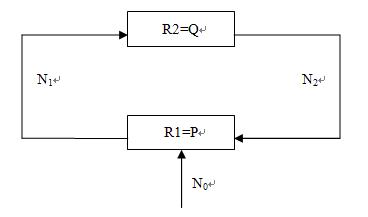 |
| ||||
Home Page
F.A.Qs
Statistical Charts
Past Contests
Scheduled Contests
Award Contest
| ||||||||||
| Online Judge | Problem Set | Authors | Online Contests | User | ||||||
|---|---|---|---|---|---|---|---|---|---|---|
| Web Board Home Page F.A.Qs Statistical Charts | Current Contest Past Contests Scheduled Contests Award Contest | |||||||||
|
Language: Number System Converter
Description ACM Lab produced a batch of number system converter recently. There are two kind of converter R1 and R2. Given a parameter of P, converter R1's function is to transform the incoming P based integer into decimal number system. To simplify the design, R1 will not check that if the input is legal in P number system.  R2 is similar to R1, while acting an inverse function: convert a decimal number to Q(specified by R2) number system.  H.X.Q, a researcher of ACM Lab, made a circuit uses R1 and R2:  (The circuit works at an order R1, R2, R1, R2 ...) And she found an interesting phenomenon: if P<Q then for any input sequence N0, after plenty of convention N1 will finally equal to N2. For example, P=2, Q=4, N0=321, finally, N1=N2=3. H.X.Q is excited for her discover, and wants to know what N1 and N2 will finally be in this circuit when P, Q and N0 is given. Input The input contains several test cases. The first line of each test case specifies two number P and Q (1 < P < Q < 37), follow by N0 (the length of N0 is not larger than 5,000,000). Note that a digit larger than 9 is given in small letters, with 'a'=10, 'b'=11 ... Output For each test case, output a line standing for the final sequence in the circuit. Sample Input 2 4 321 Sample Output 3 Source |
[Submit] [Go Back] [Status] [Discuss]
All Rights Reserved 2003-2013 Ying Fuchen,Xu Pengcheng,Xie Di
Any problem, Please Contact Administrator